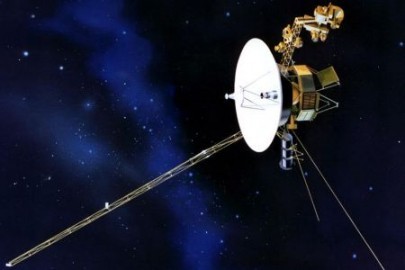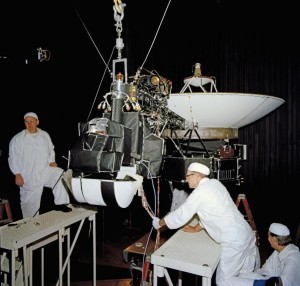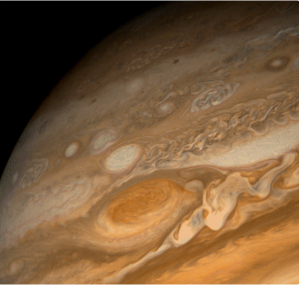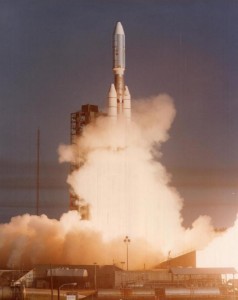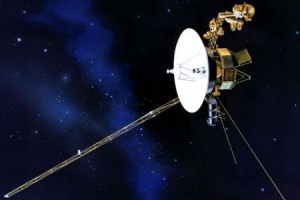NASA’s Voyager spacecraft 1 and 2 are billions of miles away from Earth and getting further away by the second — all the while returning information back to us. They’re the longest-lived spacecraft NASA has and are coming up on their 40-year anniversaries of operation.
Not only have the crafts broken the record for longest missions but they’ve also set space exploration milestones. The Voyager 1 was the first craft to enter interstellar space, which it reached in 2012, 35 years after its initial launch. And the Voyager 2 is the only craft to have flown by the outer planets Jupiter, Saturn, Uranus and Neptune, according to NASA.
(One of the Voyagers can be seen in this photo from April, 1977, just a few months before it launched to space)
The spacecraft are equipped with decades old technology but that doesn’t stop them from making observations. They’re so far out in space that they’re pushing the limits of the sun’s sphere of influence. Something a craft has never done before. The two are in search of the heliopause boundary in addition to the outer limits of the sun’s magnetic field and the outward flow of solar wind, according to NASA. Once the craft achieve this the two will be able to measure the interstellar fields, particles and waves without the solar wind playing a part.
The Voyager 1 craft already found that the cosmic rays in interstellar space are four times more abundant there than they are closer to Earth meaning the heliosphere helps shield everything within it like the planets of the solar system, from radiation. It’s traveled almost 13 billion miles from Earth since its Aug 20, 1977, launch.
(Voyager 1 was launched in 1977 and this is an image taken by it)
Voyager 2 has yet to reach interstellar space as it’s only about 10.5 billion miles away from Earth, but once it does reach interstellar space it will be in a different part of that space than its counterpart. This will allow researchers to compare what each craft finds and determine the variations in interstellar space.
Anyone can track the two craft and watch the miles tick away as they travel further and further from Earth. They’ve been able to travel so far because they each have three radioisotope thermoelectric generators on board. These essentially use heat emitted by decaying plutonium-238 for energy. Even though the crafts were built in the 1970s they were built to last with systems that can adjust when necessary.
(The Voyager 1 launched on top of the Titan/Centaur-6 from Kennedy Space Center in 1977)
But the longer the crafts are in space the more the power decreases to run all of the instruments on board that measure the charge of particles, magnetic fields, radio waves and solar wind plasma. To best guide the craft and run them as efficiently as possible current engineers work with those who helped build the craft back in the 70s. The craft are estimated to go silent, or be turned off, before 2030 after a long career relaying information on deep space to researchers.
Ask me anything
Explore related questions
